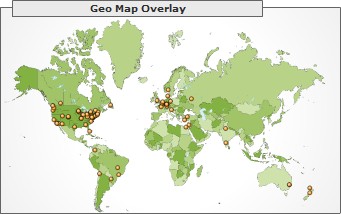Nothing like starting off the new year with some new corporate attitudes: an article in today’s Globe and Mail (which in turn, reviews a Business Week article that I couldn’t locate) talks about business trends for 2006. One of these with which I completely agree is blogging as a marketing tool; it became painfully obvious with a mid-year Business Week cover on blogs that blogs have become mainstream. I’ve mentioned previously that this blog is my main marketing channel: I don’t do any sort of traditional advertising, and rely primarily on personal contact and word of mouth for new business. This blog is a way of extending that word of mouth (or “word of blog”) by putting my ideas and opinions online; not exactly an online portfolio, but a way for anyone out there who’s interested in working with me to learn a bit more about how I think.
I had a funny experience in a meeting a month ago with two people from a large systems integrator: the sales guy asked me how, as a one-person firm, I do sales and marketing, and I told him that this blog was my key marketing tool. His expression was something between distaste and derision, while his project manager colleague asked me what a blog was. Knowing what I already know about blogs and other types of viral marketing, and reinforced by the opinions that I’m seeing everywhere (including the G&M/BW article quoted above), I can see that these guys — and likely a large part of their organization — are on the wrong side of the digital divide, and they don’t even know it: in fact, they would describe themselves as being on the cutting edge of technology. It put me in mind of an older gapingvoid post about smarter conversations: I especially like point #5: “Ruthlessly avoid working for companies that ‘don’t get it'”. Many of my customers embrace the smarter conversations concepts, even if they don’t know what a blog is (yet), so I’m not ready to fire any of them yet; however, I can do my best to avoid partnering with SI’s who don’t get it, since that usually results in an experience akin to a steamroller running over me.
Over the past few months, I’ve bookmarked a number of posts about business blogging, and this has been a good opportunity to review them. I’m not a “professional blogger”, that is, I don’t get paid to blog (and the ad revenue isn’t enough to even cover my ISP charges), but I see blogging as an essential part of my business because of the global microbrand potential: I am a tiny brand but have the potential to provide my services anywhere in the world, and this blog is part of what gets me out of my own backyard. I provide some niche services out in the long tail, so I’m marketing to a few customers spread over a large geographic area.
The Content Factor’s To Blog or Not to Blog states a key point, although their message is targeted at larger companies: “Companies don’t blog; people blog.” This blog contains my personal opinions, not some groomed marketing-speak that I think will sell my services. My premise is that if you read my opinions (and even agree with them sometimes), then we’re more likely to do business together sometime in the future.
Mike McLaughlin on Guerrilla Marketing asked Should Consultants Blog?, and stated that you don’t really need to blog if you work in an industry where blogs are “still an oddity, not a fixture”. I couldn’t disagree more: I work almost exclusively with financial services and insurance clients, typically with their back-office operations, where blogs are definitely an oddity. However, I’m starting to hear many comments from people within my clients’ organizations about how they’re reading my blog (which they found because it’s right there in my email signature) and are learning something from it. Presumably, that adds value to their business day, reinforces their good opinion of me and my skills as they applies to their business, and therefore improves our business relationship. Don’t assume that just because your clients are in a “traditional” industry that they aren’t interested in expanding their horizons by reading some blogs of value. Especially yours.

